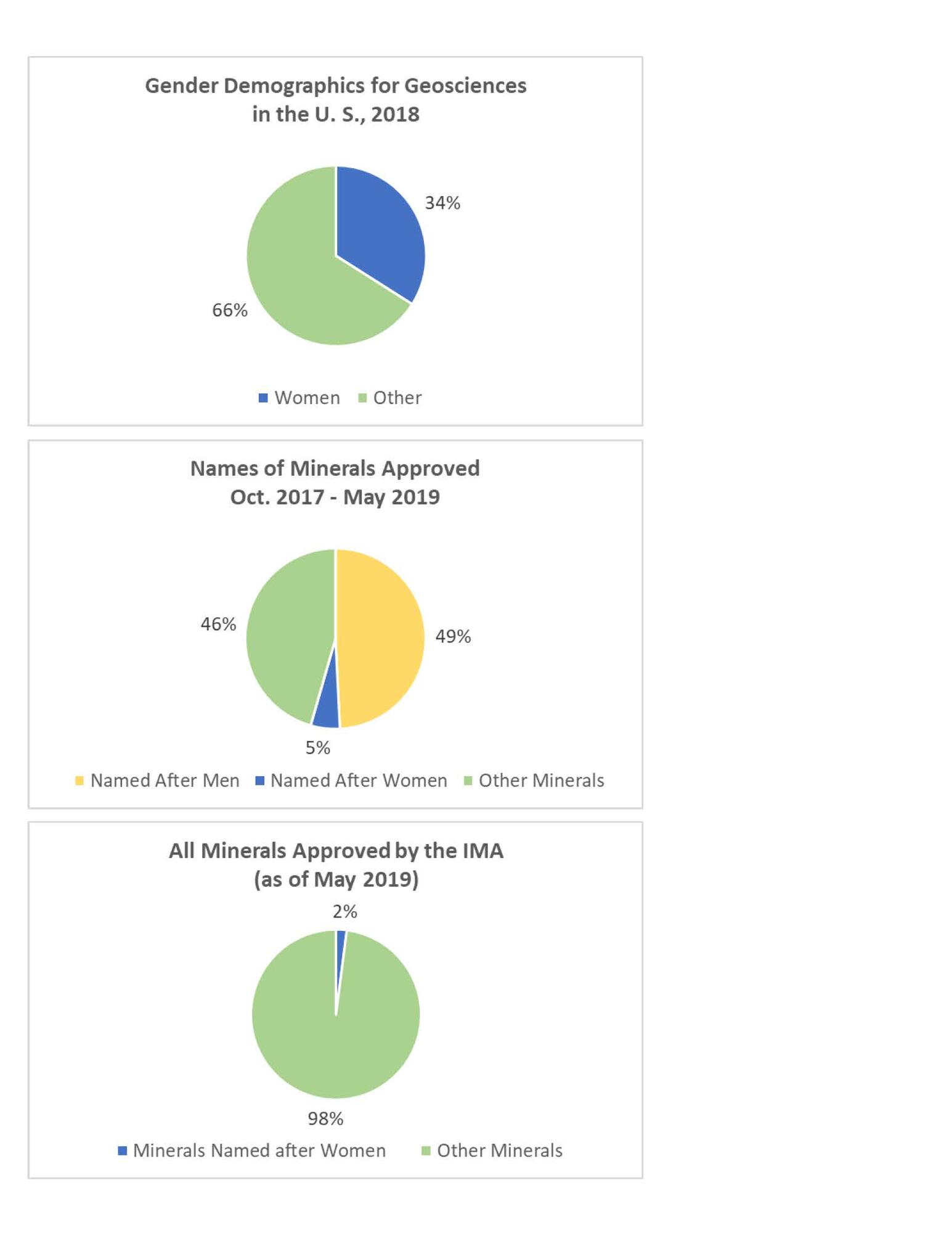Since the late 1780’s naming minerals after people has been a popular convention in mineral nomenclature. Around half of all minerals are named after people. Despite this, very few minerals are named after women.
Out of the 5493 unique minerals currently recognized by the International Mineralogical Association, only 112 minerals are named after women. Ninety-six different women have one or more minerals named after them; however, many of those women were honored either as a gift from a man (despite not being involved in geology) or with their husbands.
Although the rate at which minerals are being named after women is growing, it is still quite small. Between October 2017 and May 2019, 191 new minerals were approved by the IMA, of which 94 were named after men and only 10 were named after women. The geosciences are growing in gender diversity, with 34% of people working in geosciences in America in 2018 identifying as women. The naming of minerals needs to change and grow to embrace this diversity, showing women that they are appreciated and respected, and that they belong in the geosciences.
- 112 of the 5493 minerals recognized by the International Mineralogical Association are named after women (2.0%)
-
96 women have 1 or more minerals named after them
- 10 of those women (10%) were not involved in geology and had a mineral named after them as a gift from a man
- 19 of the 112 minerals (17%) were named after a woman in conjunction with her husband
- 10 of 191 minerals approved from Oct. 2017 – May 2019 (5.2%) were named after women

In addition, geology needs to recognize its racial and queer diversity. Geology as a field has traditionally been dominated by white males of European descent. As recently as 2015, National Center for Science and Engineering Statistics named geology as the STEM field with the lowest diversity in higher education in the United States. The Geological Society of America doesn’t currently offer statistics on membership diversity in terms of ethnicity, race, or LGBT+ status, including not providing an “other” option in reporting gender. Due to the international nature of the geosciences, minerals are named after people of many different races and ethnic backgrounds, however it is unclear if any minerals are named after people who identify as LGBT+.
Credit:
Sophia Brooks-Randall
Mount Holyoke College ('20)
Harvard MGMH Exhibit 2019
The IMA’s Commission on New Minerals, Nomenclature and Classification (CNMNC) is in charge of reviewing the validity of new mineral applications. Current guidelines for mineral nomenclature include:
- Minerals may be named after people or organizations important to mineralogy and related sciences. Minerals cannot be named after people or organizations unrelated to the field, such as politicians or celebrities. The namesake of a mineral must approve the use of their name if they are alive. Minerals cannot be named after anyone involved in the proposal of the new mineral.
- Minerals can be named after locations, however the spelling of the location must be consistent with local usage (not a translation).
- Minerals can be named in any language, however the names must be printed in the Latin alphabet in order to facilitate printing of the mineral name worldwide.
- Minerals should end in the suffix “-ite”
Once a mineral is approved by the IMA-CNMNC, the scientists behind its discovery can publish articles in scientific journals and make the new minerals and their properties known to the world.